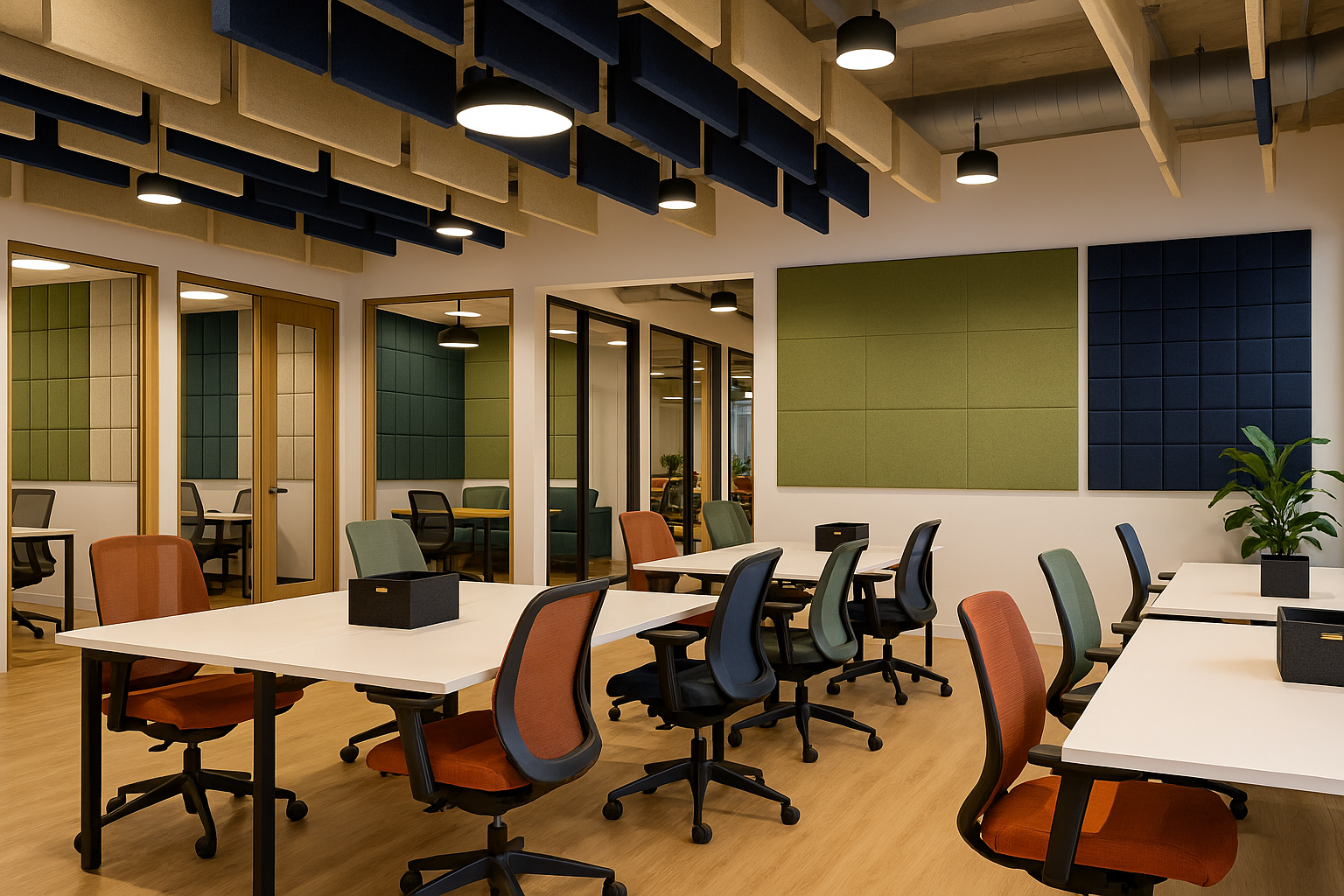How to Soundproof a Nightclub: Solving the Challenges of Noise Control
Nightclubs are places of energy, music, and social interaction, where patrons come to dance, socialize, and enjoy high-energy sound systems. However, with the increased volume comes significant challenges—primarily, excessive noise that can travel through walls, floors, and ceilings, disturbing nearby areas and creating unwanted sound reflections inside the venue. Without proper soundproofing, these issues can not only affect the experience inside but also lead to complaints from surrounding buildings and potentially legal repercussions. So, how can a nightclub be effectively soundproofed?
The Challenges of Soundproofing a Nightclub
-
Sound Transmission Through Walls, Floors, and Ceilings
In nightclubs, the problem begins with sound transmission. Music played at high decibels—typically around 120-130 dB—can easily pass through walls, ceilings, and floors, causing noise pollution in adjacent areas. The materials used in construction often have insufficient soundproofing capabilities, allowing sound to travel freely. As a result, surrounding apartments, offices, and businesses may suffer from unwanted noise, leading to complaints and even fines. -
High Sound Reflections and Uncontrolled Bass
Another significant issue in nightclubs is the reflection of sound waves. With hard surfaces such as concrete floors, walls, and metal ceilings, sound bounces off these surfaces, creating an echo effect that can be highly disruptive. Moreover, the bass frequencies—which are a crucial part of the nightclub experience—can become particularly problematic. Without proper control, low-frequency sounds can reverberate through the building, causing excessive vibration and making the noise feel more intense than it actually is. -
Poor Quality Acoustic Treatment
The use of non-technical, cheap, and low-quality materials for acoustic treatment can worsen these issues. Many nightclub owners, unaware of the complexities of soundproofing, turn to unprofessional products like low-density mineral wool covered with wood or fabric. While this may appear to be an inexpensive solution, it does little to control high-decibel noise, and in many cases, such makeshift solutions can have little to no impact on soundproofing or acoustic treatment.
The Solution: Advanced Soundproofing Materials and Proper Layering
To achieve proper soundproofing in a nightclub, it's essential to use high-quality materials that have been specifically designed and tested for their sound-absorbing and soundproofing properties. Here's how advanced materials can be layered to create a solid, effective solution:
1. SoundBlanket Mass Loaded Vinyl Noise Membrane
The first step to tackling sound transmission is to block sound at its source. SoundBlanket Mass Loaded Vinyl (MLV) is a highly effective noise barrier material that significantly reduces sound transmission through walls, floors, and ceilings. Made from lab-tested, certified raw materials, this product offers a density that is ideal for blocking high-volume noise in commercial spaces like nightclubs. When installed on walls or floors, it absorbs and prevents sound from passing through the building structure.
2. BassBloc Low-Frequency Sound Absorber
Bass frequencies are often the hardest to control in a nightclub, but BassBloc can be an ideal solution. This product is specifically designed to target low-frequency sound, ensuring that the bass doesn't vibrate through the building's structure. The material is engineered to absorb these low frequencies, preventing them from traveling through walls and floors, and it pairs well with SoundBlanket for superior overall soundproofing.
3. Perforated HDHMR and Fabric
After applying SoundBlanket and BassBloc, it's important to finish the soundproofing setup with Perforated HDHMR (High-Density High Moisture Resistance) panels. These panels not only add an aesthetic element to the nightclub’s interior design but also improve acoustic treatment by allowing sound to be absorbed, thus reducing unwanted reflections. The perforations in the HDHMR allow for better sound absorption without sacrificing structural integrity, and the final layer of fabric ensures that the panels blend seamlessly with the overall décor.
4. Fire-Rated PET Panels or Wooden Acoustic Panels
To complete the setup, consider using fire-rated PET panels or wooden acoustic panels. These products not only provide an additional layer of sound absorption but also contribute to fire safety, a crucial factor in commercial venues. PET panels are particularly eco-friendly, being made from recycled materials, while wooden panels provide a luxurious aesthetic and further aid in sound control.
The Importance of Proper Layering and Installation
The key to effective soundproofing in a nightclub is the layering of advanced materials. By combining SoundBlanket, BassBloc, and Perforated HDHMR, and installing these with a GI (Galvanized Iron) framework, you create a robust barrier that blocks sound effectively. This layered approach is scientifically proven to provide certified sound reduction of 60-65 dB, as per ASTM E-90 standards.
In comparison, untreated walls or poor-quality soundproofing may not achieve the same results, often leaving the sound levels inside the nightclub dangerously high or transmitting to neighboring buildings. With proper installation of these high-performance materials, you can guarantee that the sound levels stay within safe and acceptable limits.
Why Not Just Use Cheap Materials?
It’s tempting for nightclub owners to choose cheaper solutions like mineral wool covered with wood or fabric. However, these products are often inadequate for the high demands of soundproofing in environments with extreme noise levels. Low-density mineral wool, for example, may absorb some mid-range frequencies, but it does little to reduce the transmission of bass-heavy sound or high-decibel noise. Furthermore, these cheap solutions lack the durability and certification required for a lasting, professional-grade soundproofing system.
Conclusion: Achieving the Best Soundproofing Results for Your Nightclub
Soundproofing a nightclub is a significant investment, but it’s a crucial one. By using high-quality materials like SoundBlanket MLV, BassBloc absorbers, perforated HDHMR, and fire-rated acoustic panels, nightclub owners can ensure a better environment for their patrons and minimize noise complaints from surrounding areas. These materials are lab-tested, certified, and engineered to provide optimal soundproofing and acoustic treatment in high-volume spaces.
Layering these advanced products, combined with proper installation techniques, will ensure that the nightclub remains an enjoyable, noise-controlled space, without the undesirable noise leakage to nearby properties. So, instead of relying on cheap, ineffective solutions, opt for professional-grade materials that will offer long-term results, and enhance the acoustics of your venue while meeting legal and environmental noise standards.





1 Сomment